Northern Lights photos
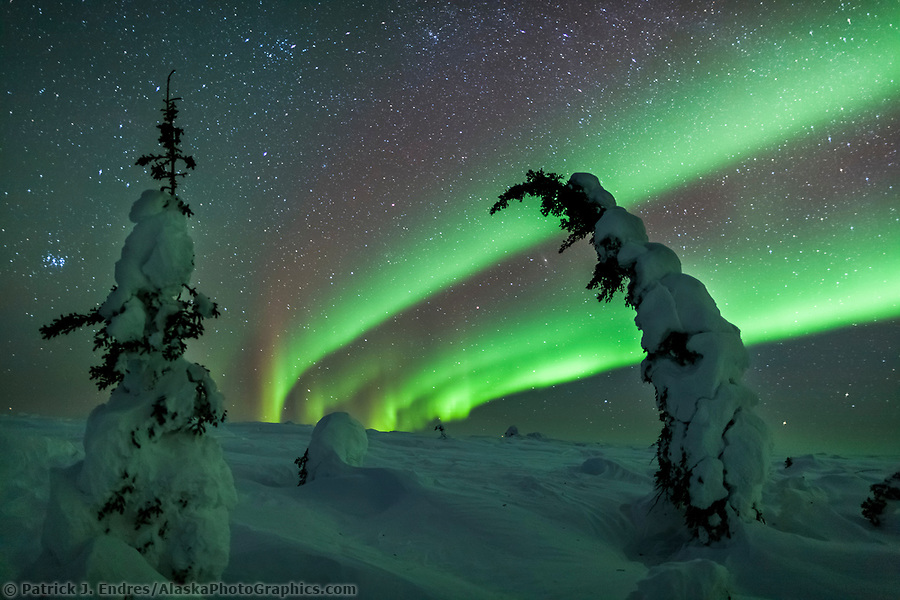
The Northern lights arc over the snow-covered tundra in the Interior of Alaska. (Patrick J Endres / AlaskaPhotoGraphics.com)
Northern Lights (Aurora borealis)
The northern lights are caused by high-speed electrons and protons from the sun, trapped in the Van Allen radiation belts high above the earth and then channeled toward the polar regions by the earth’s magnetic field. These electrically charged particles enter the atmosphere and collide with air molecules (chiefly oxygen and nitrogen), thus exciting them to luminosity. The northern lights appear between 35 mi and 600 mi (56 km–970 km) above the earth, as patches of light, in the form of streamers, arcs, banks, rays, or resembling hanging draperies. The displays coincide with periods of greatest sunspot and solar activity. All of the photos of the northern lights here may be licensed as stock photos for your commercial use or purchased as fine art prints for your home or office.
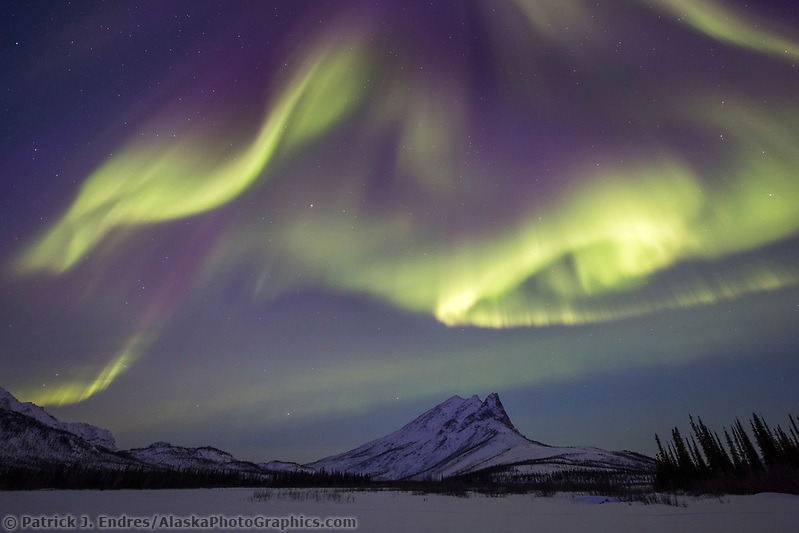
Aurora dances over Sukakpak mountain in the Brooks Range in Alaska’s Arctic. (Patrick J Endres / AlaskaPhotoGraphics.com)
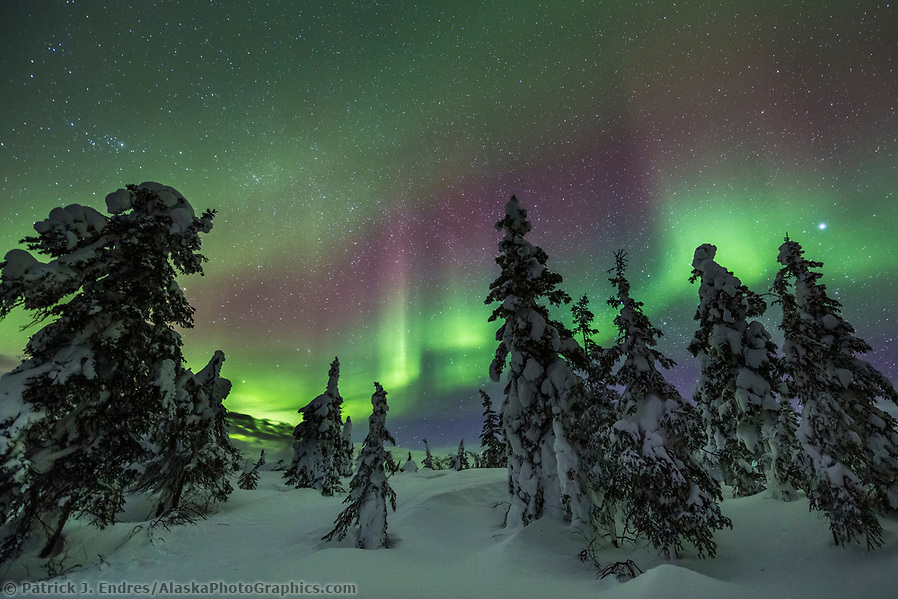
The northern lights twist and turn over a snow-covered boreal forest of spruce trees during a March display in Alaska’s interior. (Patrick J Endres / AlaskaPhotoGraphics.com)
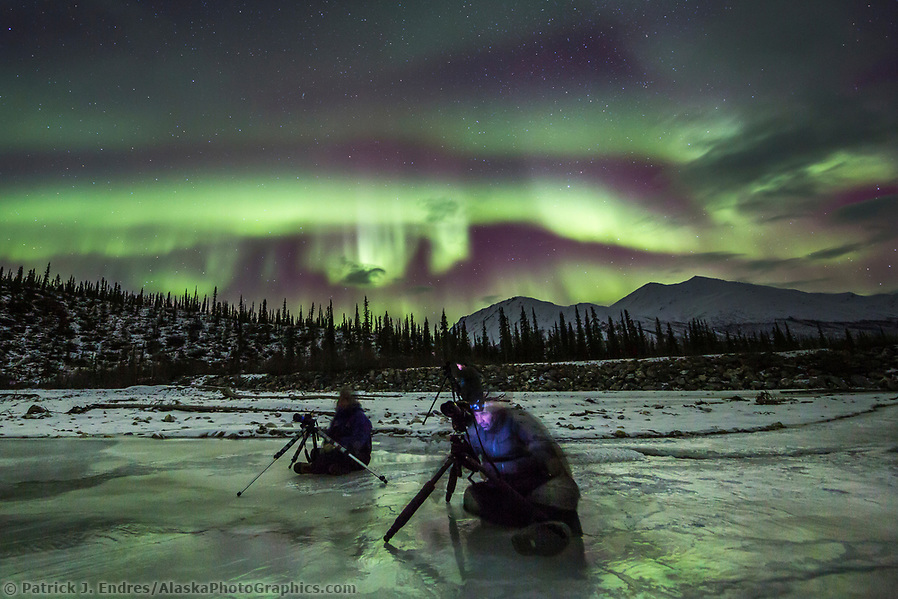
Photographers with tripods take pictures of the aurora borealis in the night sky in Alaska’s Brooks Range, Arctic, Alaska (Patrick J Endres / AlaskaPhotoGraphics.com)
Article and eBook
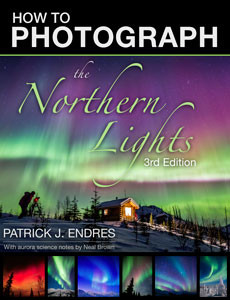 I wrote a complimentary article titled: How to Photograph the Northern Lights that addresses basic instructions and tips on photographing the northern lights. Where to go, how to dress, batteries, lens types, etc. It served as the basis for a much more extensive and comprehensive treatment of the subject,t which turned into a wonderfully illustrated 330-page tutorial that will equip you with all the critical information necessary to capture your photos of the northern light. It is in a digital eBook format: How to Photograph the Northern Lights eBook.
I wrote a complimentary article titled: How to Photograph the Northern Lights that addresses basic instructions and tips on photographing the northern lights. Where to go, how to dress, batteries, lens types, etc. It served as the basis for a much more extensive and comprehensive treatment of the subject,t which turned into a wonderfully illustrated 330-page tutorial that will equip you with all the critical information necessary to capture your photos of the northern light. It is in a digital eBook format: How to Photograph the Northern Lights eBook.
Northern Lights Forecast Websites
- UAF Geophysical Institute
- Space Weather
- Solar Cycle 24
Colors and the Northern lights
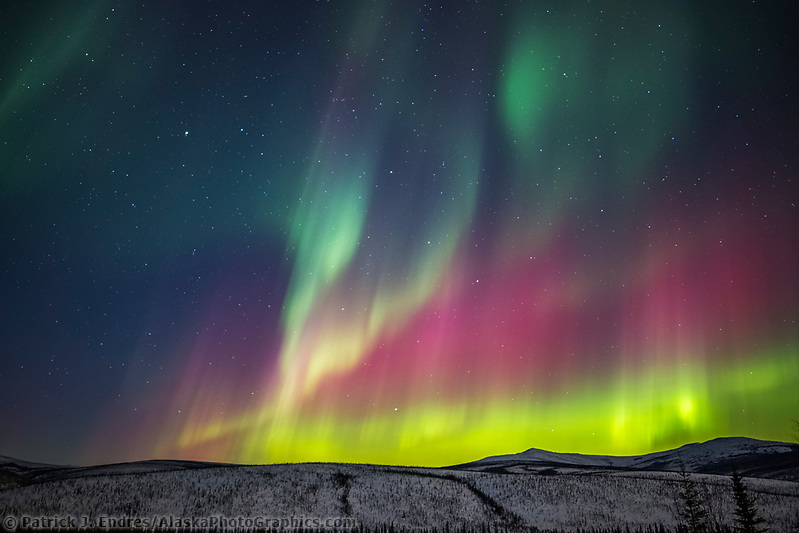
The northern lights burst into a colorful display over the Caribou Bluff cabin during a night of high aurora activity in the White Mountains Recreation Area in Alaska’s interior. March 17, 2013 (Patrick J Endres / AlaskaPhotoGraphics.com)
Red and Green-Oxygen: Light emitted by the northern lights tends to be dominated by emissions from atomic oxygen, resulting in a greenish glow and, in the higher altitudes, a red glow.
Other colors-Nitrogen: Color variations, especially those emitted by atomic and molecular nitrogen (blue and purple), change very quickly and result in dynamic movement in the northern lights.
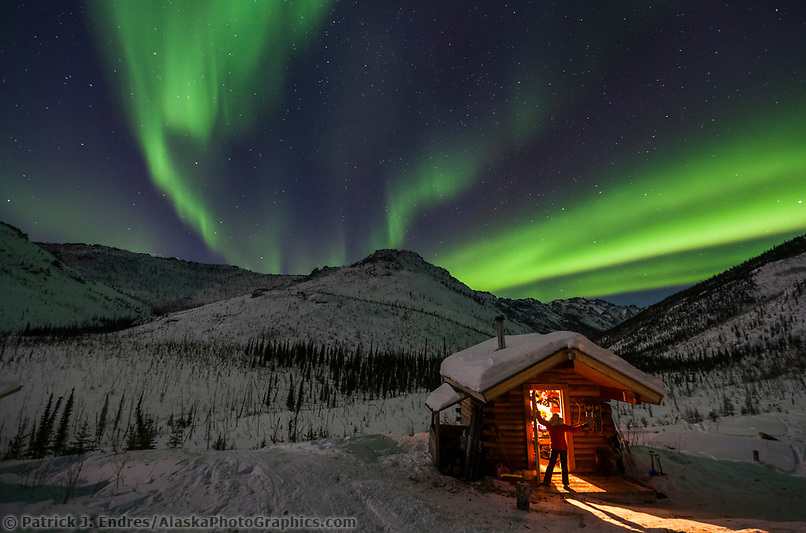
Visitors to the Caribou bluff cabin in the White Mountains National Recreation area view the northern lights overhead on a winter night. (Patrick J. Endres / AlaskaPhotoGraphics.com)
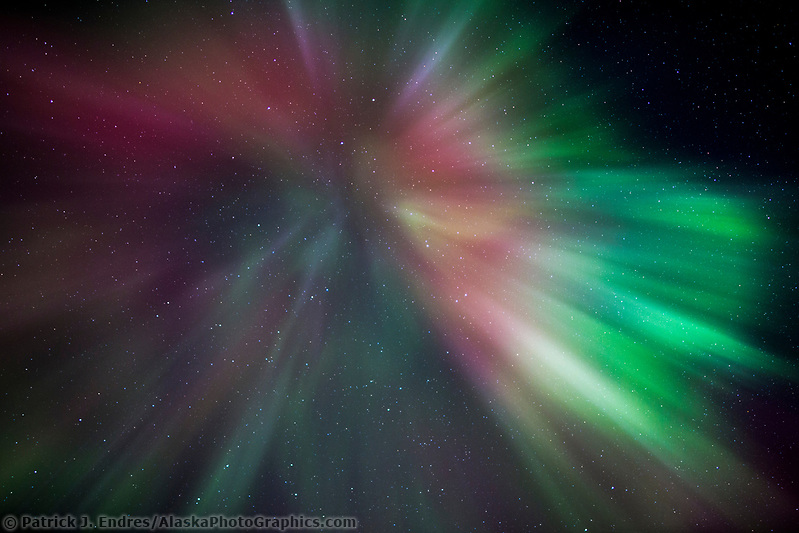
The northern lights burst into a coronal display during high activity in March 2013. (Patrick J Endres / AlaskaPhotoGraphics.com)
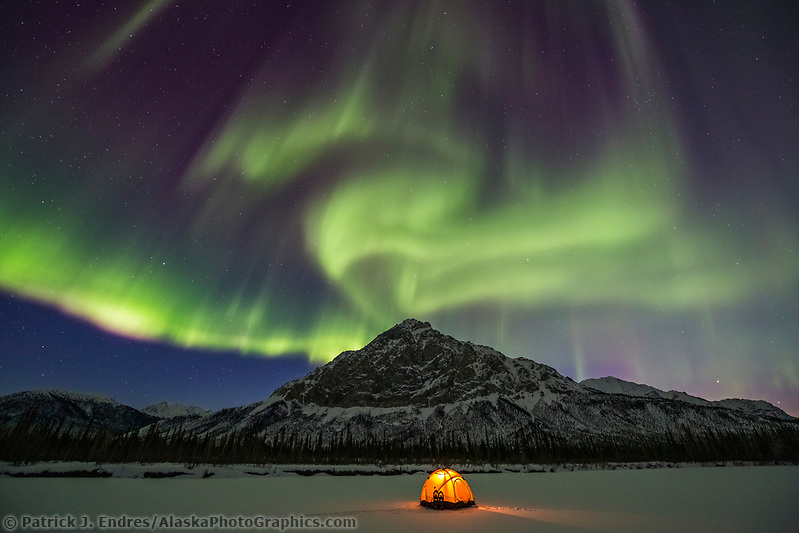
Northern lights over yellow tent and winter camp in the Brooks Range, Alaska. (Patrick J Endres / AlaskaPhotoGraphics.com)
